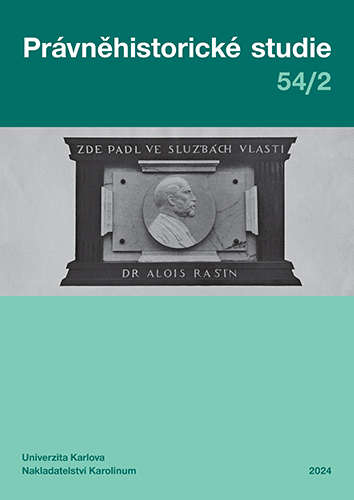Původ dělení věcí na hmotné a nehmotné
Origins of the Classification of Corporeal and Incorporeal Things
Author(s): Sylvie GrulichováSubject(s): Law, Constitution, Jurisprudence, History of Law, Ancient Philosphy, Philosophy of Law, Roman law
Published by: Univerzita Karlova v Praze, Nakladatelství Karolinum
Keywords: corporeal thing; incorporeal thing; iura; corpus; Roman law; Gaius
Summary/Abstract: The article concerns the origins of the well-known classification of corporeal and incorporeal things in Roman law, which follows from the development visible in the legal sources from Institutes of Gaius to the codification of the emperor Justinian. The wide range of non-legal sources dealing with the classification, mostly the philosophical works, from authors as Cicero, Seneca, Gellius, or Lactantius, is taken also into account. Two types of the classification based on the corporeality of things arise from all the analyzed texts. The first one uses the terms corporeal and incorporeal thing, but the legal sources, except the Institutes of Gaius and apart the non-legal ones, almost avoid it. The second one divides things with corpus and the ones consisting of rights and it is represented in the text of Ulpianus or Hermogenianus as well as in several post-classical legal sources. Nevertheless, the codification of the emperor Justinian adopts the formulation according to Gaius, whose proximity to the philosophy categories can be observed so the classification of the corporeal and incorporeal things.
Journal: Právněhistorické studie
- Issue Year: 54/2024
- Issue No: 2
- Page Range: 95-110
- Page Count: 16
- Language: Czech

